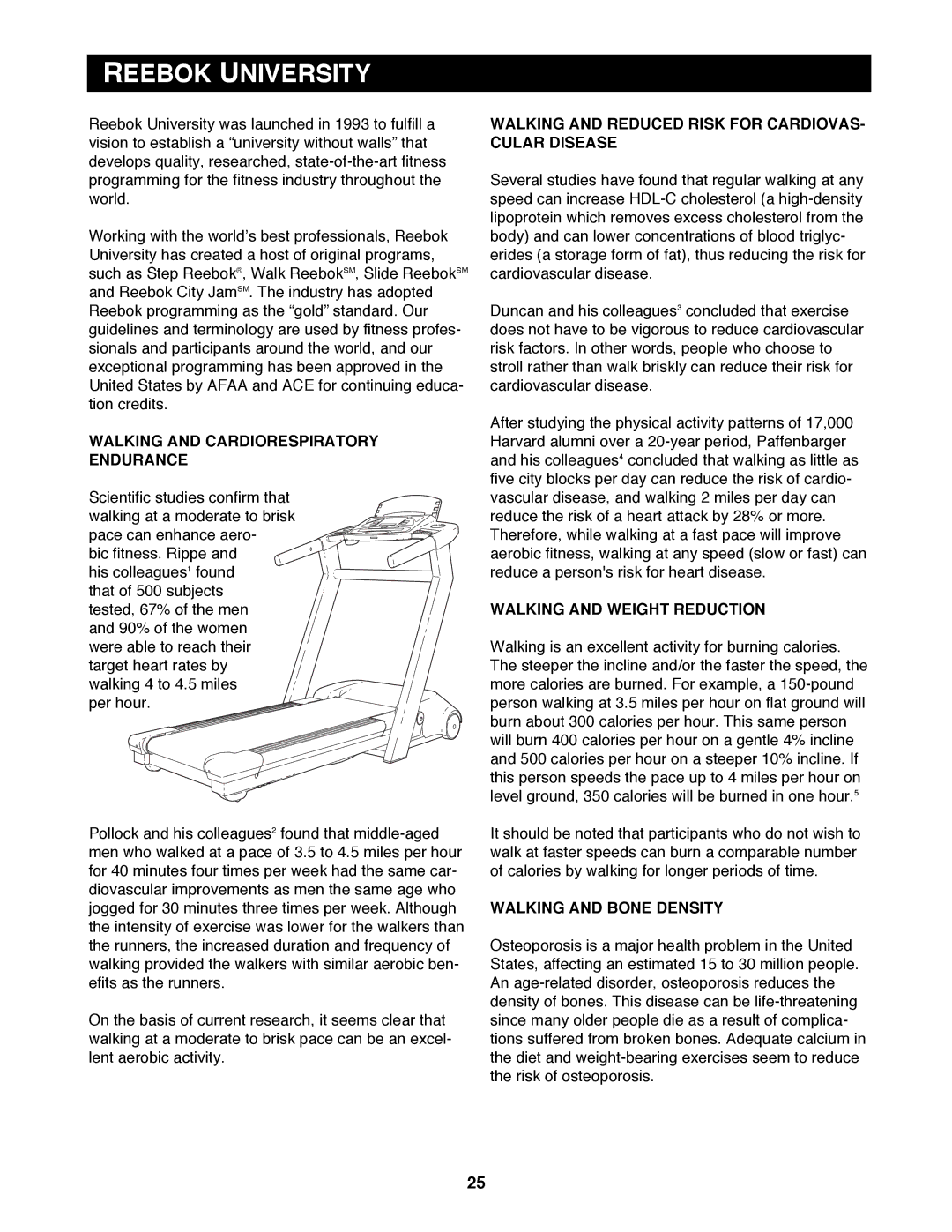
REEBOK UNIVERSITY
Reebok University was launched in 1993 to fulfill a vision to establish a Òuniversity without wallsÓ that develops quality, researched,
Working with the worldÕs best professionals, Reebok University has created a host of original programs, such as Step Reebok¨, Walk ReebokSM, Slide ReebokSM and Reebok City JamSM. The industry has adopted Reebok programming as the ÒgoldÓ standard. Our guidelines and terminology are used by fitness profes- sionals and participants around the world, and our exceptional programming has been approved in the United States by AFAA and ACE for continuing educa- tion credits.
WALKING AND CARDIORESPIRATORY ENDURANCE
Scientific studies confirm that walking at a moderate to brisk pace can enhance aero-
bic fitness. Rippe and his colleagues1 found that of 500 subjects tested, 67% of the men and 90% of the women were able to reach their target heart rates by walking 4 to 4.5 miles per hour.
WALKING AND REDUCED RISK FOR CARDIOVAS- CULAR DISEASE
Several studies have found that regular walking at any speed can increase
Duncan and his colleagues3 concluded that exercise does not have to be vigorous to reduce cardiovascular risk factors. In other words, people who choose to stroll rather than walk briskly can reduce their risk for cardiovascular disease.
After studying the physical activity patterns of 17,000 Harvard alumni over a
WALKING AND WEIGHT REDUCTION
Walking is an excellent activity for burning calories. The steeper the incline and/or the faster the speed, the more calories are burned. For example, a
Pollock and his colleagues2 found that
On the basis of current research, it seems clear that walking at a moderate to brisk pace can be an excel- lent aerobic activity.
It should be noted that participants who do not wish to walk at faster speeds can burn a comparable number of calories by walking for longer periods of time.
WALKING AND BONE DENSITY
Osteoporosis is a major health problem in the United States, affecting an estimated 15 to 30 million people. An
25
